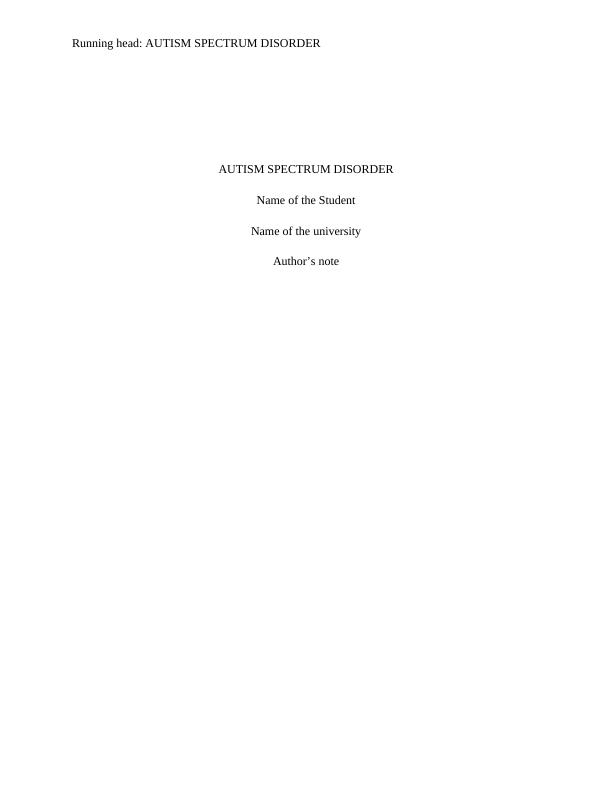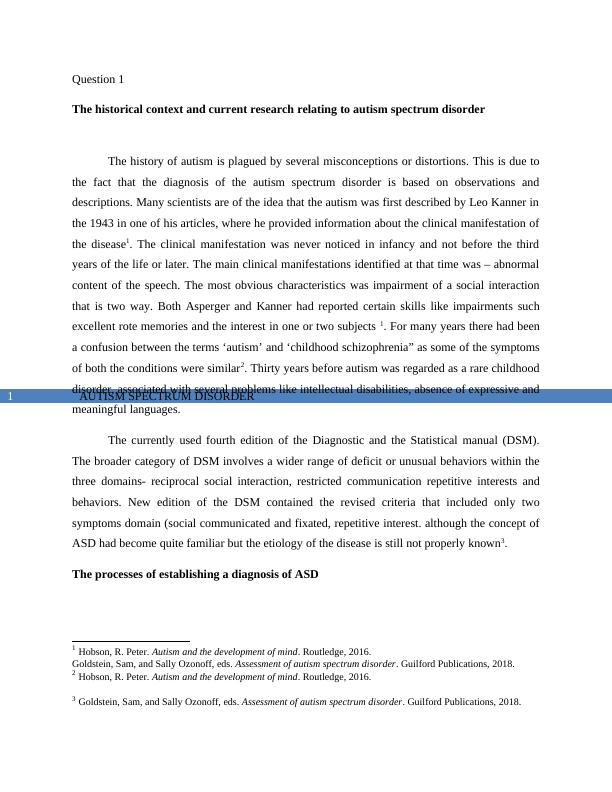Autism Spectrum Disorder - Historical Context, Diagnosis, Difficulties and Implications on Teaching and Learning
Complete three tasks for the units of competency CHCEDS022 and CHCEDS031, including a workplace report and written tasks.
6 Pages1297 Words494 Views
Added on 2022-11-14
About This Document
This document provides information about the historical context and current research relating to autism spectrum disorder, the processes of establishing a diagnosis of ASD, the main difficulties experienced by students with ASD, and the implications of the disorder on effective teaching and learning practices.
Autism Spectrum Disorder - Historical Context, Diagnosis, Difficulties and Implications on Teaching and Learning
Complete three tasks for the units of competency CHCEDS022 and CHCEDS031, including a workplace report and written tasks.
Added on 2022-11-14
ShareRelated Documents
End of preview
Want to access all the pages? Upload your documents or become a member.
Autism Spectrum Disorder Disease Analysis
|4
|814
|14
Autism Spectrum Disorder: Symptoms, Diagnosis and Treatment
|12
|3017
|377
Myth and Autism : Report (Doc)
|8
|2066
|378
Sleep Apnea | Essay on Autism
|5
|1667
|19
Autism in Children: Impact on Parents' Couple Problem-Solving Interactions and Therapies for Treatment
|9
|3022
|68
Birth Order and Reproductive Stoppage and Relation to ASD
|21
|7440
|140



